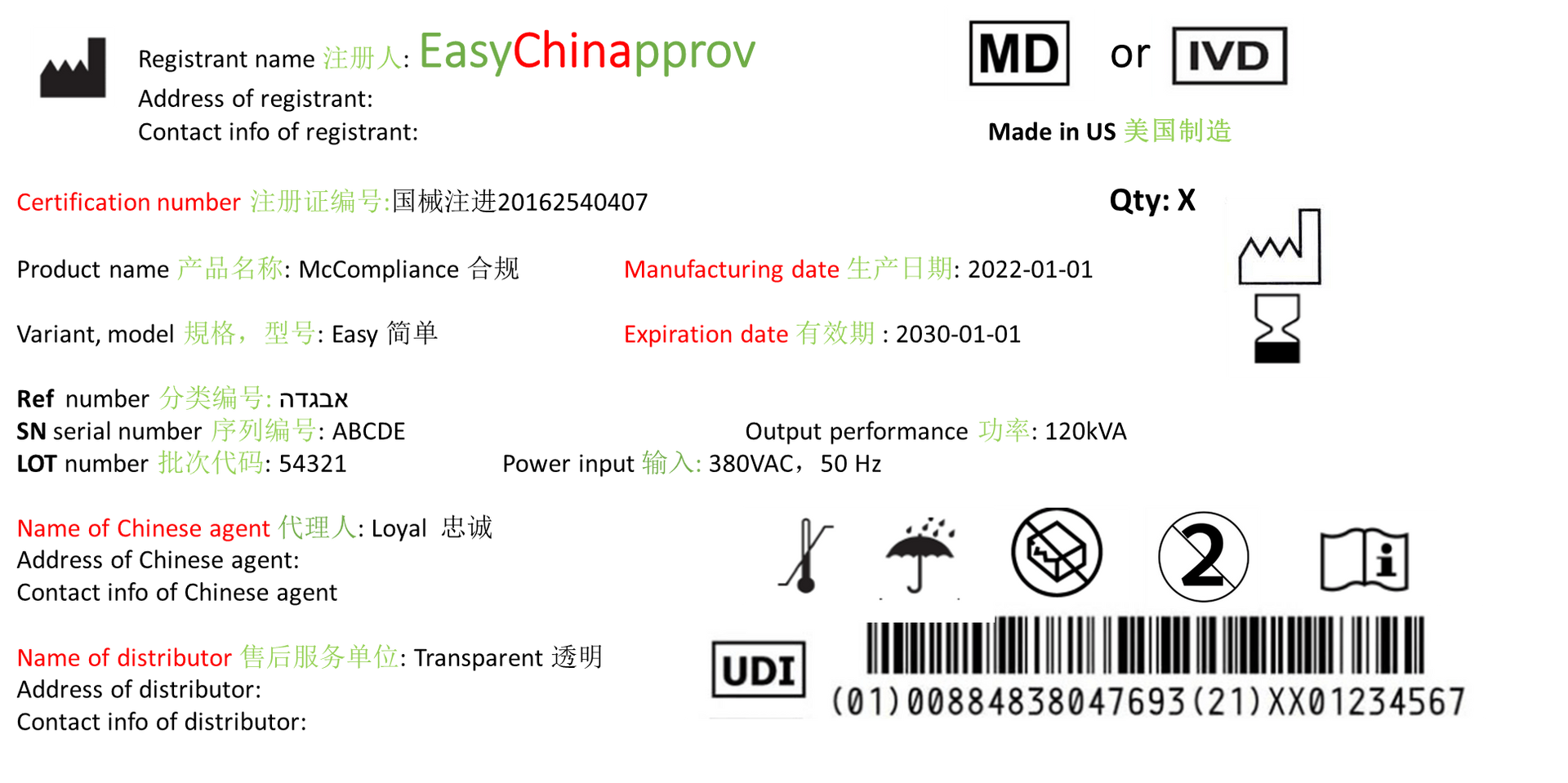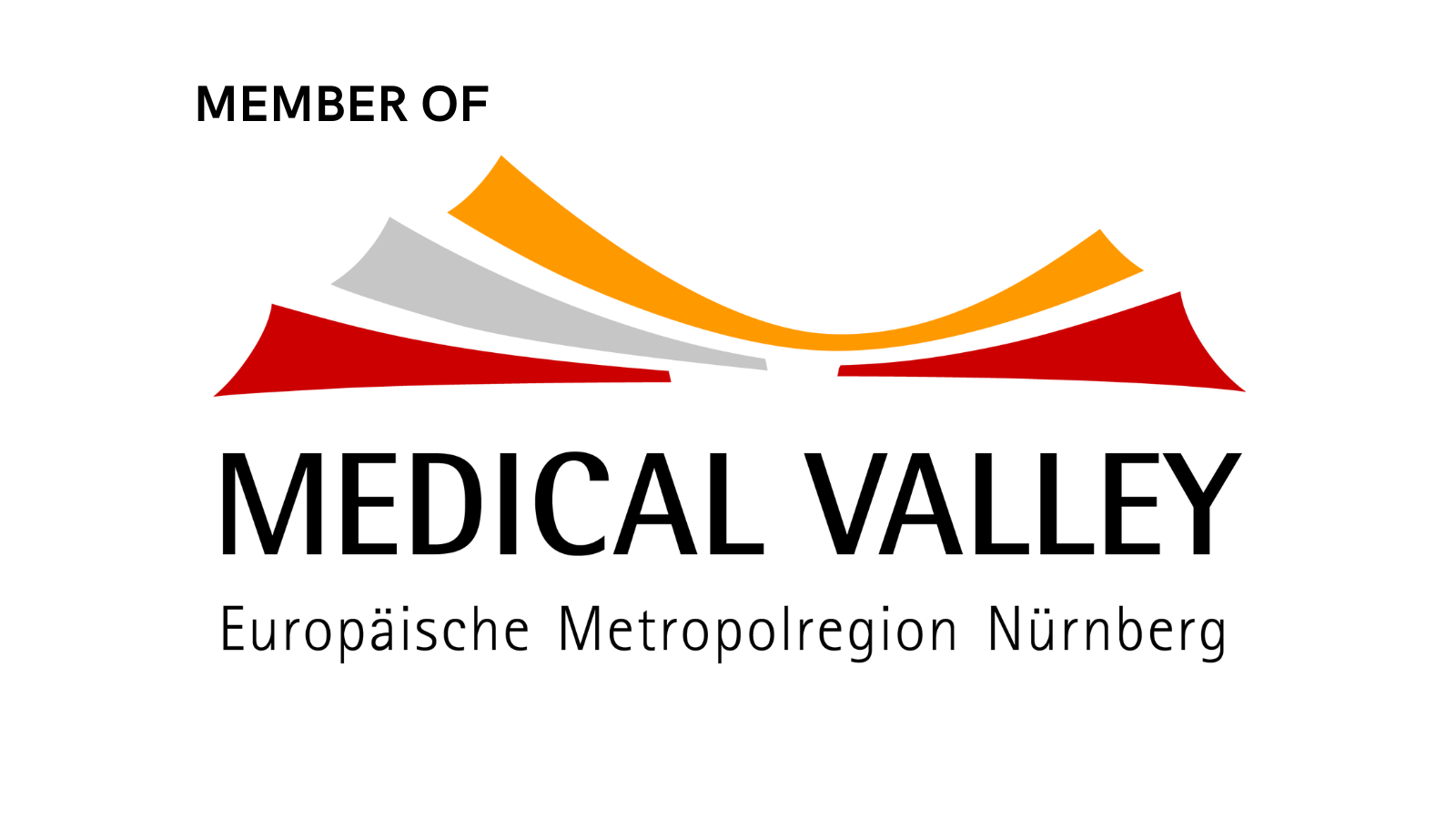Encyclopedia of medical device and IVD in China

Official Definition
National Medical Products Administration (NMPA)
As one part of State Administration for Market Regulation (SAMR) the NMPA is in charge of supervision of drug, medical device and cosmetics in China.
Chinese medical device evaluation (CMDE) performs technical evaluation of medical device. Its role is quite similar to Center for Devices and Radiological Health (CDRH) at FDA in USA.
“Regulations on supervision and administration of Medical Device” (=State Council Order No. 739) has the same legally role as 2017/745 (Medical Device Regulation, MDR) in EU or FD&C Act in US. It is highest law for medical device and IVD.
Medical device
is an instrument, equipment, appliance, in vitro diagnostic reagent and its calibrator, material, and other similar or relevant articles including necessary computer software, directly or indirectly contacting human body; the effectiveness are obtained mainly through physical means other than pharmacological, immunological or metabolic ways, or such ways are involved in but only play auxiliary roles; which is used to achieve the following intended outcomes:
· Diagnosis, prevention, monitoring, treatment or alleviation of diseases
· Diagnosis, monitoring, treatment, alleviation or functional compensation for an injury
· Examination, substitution, regulation or support of physiological structure or physiological process
· Life support or life sustaining
· Contraception Control
· Examination of the sample from human body to provide information for medical or diagnostic purpose
Medical device users refer to institutions that use medical devices to provide medical and other technical services to others, including medical institutions, family planning technical service institutions, blood stations, apheresis plasma stations, and rehabilitation assistive device adaptation institutions.
Large-scale medical device refers to large-scale medical device with complex technology, large capital investment, high operating cost, large impact on medical expenses and included in catalog management.
Medical device registrant (applicant) and record holder (filer)
Depending on translation turning up in many regulations, it means legal manufacturer for class II and III as registrant or applicant, for class I as record holder or filer.
1. Registration
is also called authorized - or in country representative. It is equivalent to US agent or UK responsible person. It is local representative in China who submits dossier, register UDI, adverse event report and communicates with Chinese authority.
Performance specification at product technical requirements
functional and safety indicators of the finished product that can be objectively verified. The research and evaluation content is not recommended to be specified in the technical requirements performance specification
Electronic regulated product system (eRPS)
This system is a platform to submit the electronic technical documentation to authority in term of medical device registration in China.
2. Post market
Serious adverse event
The following is part of adverse event form what manufacturer has to fill.
Serious adverse event is defined as the damage that one of the following situations is met:
1. Life threatening
2. Causing permanent harms to body function or injuries to body structure
3. Medical measures are required to avoid the above-mentioned permanent harms and injuries
Group adverse event of medical device refers to the events occurred by the same medical device during its use that causes harm or threat for the health or life safety of a certain amount of population within a relatively concentrated time and area.
Medical device adverse event monitoring refers to the process of collection, reporting, investigation, analysis, evaluation and control of medical device adverse event.
Recall
First-Level recall: the use of the medical device may or has caused serious health hazards.
Second-level recall: the use of the medical device may or has caused temporary or reversible health hazards.
Tertiary-level recall: The possibility of using the medical device to cause harm is small, but it still needs to be recalled.
3. Production
Quality control
Verification/confirmation/monitoring/measurement/inspection/testing activities and their quality management related to the
main raw materials, parts, outsourced parts, intermediate products, finished products, primary packaging materials, labels, etc. related to the product and to the
production process, especially the key processes and special processes in the production process.
Fact
Hospital
There are different levels of hospitals in China.
- A primary hospital is typically a township hospital that contains less than 100 beds. They are tasked with providing preventive care, minimal health care and rehabilitation services – i.e. primary care. A primary hospital is similar to community hospitals in the West.
- A secondary hospital is one that tend to be affiliated with a medium size city, county or district and contain more than 100 beds, but less than 500. They are responsible for providing comprehensive health services, as well as medical education and conducting research on a regional basis. A secondary hospital is similar to a regional hospital or district hospital in the West.
- A tertiary hospital is a comprehensive, referral, general hospitals at the city, provincial or national level with a bed capacity exceeding 500. They are responsible for providing specialist health services, perform a bigger role with regard to medical education and scientific research and they serve as medical hubs providing care to multiple regions. The tertiary hospital is similar to a Tertiary referral hospital in the West.
Further, based on the level of service provision, size, medical technology, medical equipment, and management and medical quality, these 3 grades are further subdivided into 3 subsidiary levels: A, B and C (甲, 乙, 丙). This results in a total of 9 levels.
Official database



From our best practise
If significant change of product happens, you have to start a new registration. In US is called new 510k. In China it is called change registration or re-registration. It hides automatically that you will provide evidence and describe main significant change at dossier. The original registration will be replaced by change registration.
Change on administrative matter is a category for following:
· name or address of overseas manufacturer
· name or address of Chinese agent
is unique Chinese, it is also called in-country testing or product/sample testing. The device must be sent to a Chinese lab, according to Chinese standards specifications are tested. For active electrical medical device is typically safety - and electromagnetic compatibility.
Annual self-inspection report
For foreign manufacturers, Chinese agent is responsible to submit this annual report every year before April. Besides the basic info of approved medical device, following chapters are needed:
· Change of design, material, critical components, critical production process, quality control
· Adverse events and recalls
· Non-conforming devices
· All kinds of national inspections
· Central procurement
· Penalties
· Internal audit
Easy example
Product code is 6 digits code from classification catalog. There are 22 main product categories. Depending on intended use, medical device can be categorized into precise 6 digits product code and belonging classification.
product code 21-01-01, Radiotherapy planning software, class III.
After approval by authority, legal manufacturer receives a Chinese certificate, now electronically. It is 5 years valid. Attached on certificate is product technical requirement.

Certification number
Issued by Chinese authority after approval
Class II and III medical device
国械注进20162540407
1 : approval year (in this case 2016)
2 : product class (in this case 2)
3 : part of product code
4 : registration serial numberat NMPA
Class I medical devcie
国械备20160407
Medical issurance consumable code
The medical insurance consumables code is divided into 5 parts with a total of 20 codes.
1 code: consumable code, C
2-7 code: 6 digits classification code
8-10 code: common name code
11-15 code: product feature code
16-20 code: Production enterprise code

Product technical requirement (PTR)
is a document submitted to testing institutes (or Chinese labs) by legal manufacturers. It is a characteristic part of medical device indicating all key performance specifications and testing methods derived from Chinese standards whereby the testing institutes check own testing capability and conduct type testing.

Period risk evaluation report (PERE)
It is like European PSUR. For class II and III medical device, the PRER has to be submitted electronically each year after initial approval date till first extension registration.
For and after registration you need Chinese labelling, as instruction for use and label. In China it is regulated in guidance and standard which is essential on instruction for use and label as registration number, term of symbol etc.
see following example

The following is part of adverse event form what manufacturer has to fill.
Serious adverse event is defined as the damage that one of the following situations is met:
1. Life threatening;
2. Causing permanent harms to body function or injuries to body structure;
3. Medical measures are required to avoid the above-mentioned permanent harms and injuries.

E-learning of medical device
Try to benifit from our template, elearning (expanding, see one short example below in youtbe.), blog. We try to generate regulatory affairs science to explain not only Chinese regulation in global language.
Another option to be up to date with Chinese regulation and be efficient at Chinese registration is to book our personal training based on your demand, either alone or in group. Bring your questions, case studies, we teach the highlights of registration, project, and communicstion skills and give suggestions for your questions.






